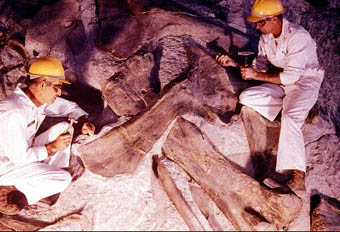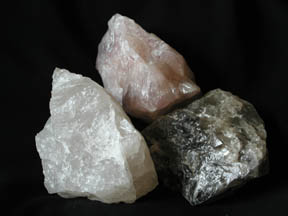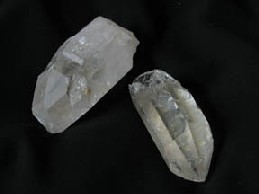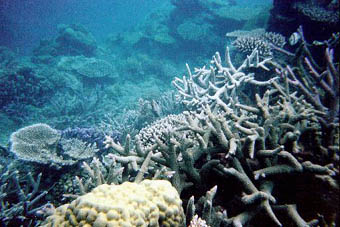This image of Australia's Great Barrier Reef shows organic sedimentary rocks in production!
Click on image for full size
Courtesy of Abi Howe, American Geological Institute
Organic Sedimentary Rocks
The sediment in an organic sedimentary rock is made of fossils!
The hard parts of animals, such as bones and shells, can become cemented together over time to make rock. Usually the bones and shells are made of calcite, or similar minerals, and the organic rock that is made from them is called limestone. Some types of microorganisms that live in the ocean or lakes have tiny skeletons made of silica. The organic rock made from their skeletons is called chert.
Plant remains squashed deep underground over millions of years make an organic sedimentary rock called coal. Coal doesn’t look like it is made of sediment. It is also often difficult to see the plant fossils within it because they have become so compacted over time, the less stable materials have left, and all that remains is carbon.
Last modified August 25, 2003 by Lisa Gardiner.
You might also be interested in:

Fossils are evidence of ancient life preserved in sedimentary rocks. On Earth, they are clues to what living things, ecosystems, and environments were like in the past. The oldest fossils are from mats
...more
Calcite is typically found in the sedimentary rock called limestone. Calcite is also in marble, a metamorphic rock, which forms when limestone is put under strong heat and pressure. Calcite crystals have
...more
Minerals are the building blocks of rocks. They are non-living, solid, and, like all matter, are made of atoms of elements. There are many different types of minerals and each type is made of particular
...more
Kingdom Plantae contains almost 300,000 different species of plants. It is not the largest kingdom, but it is a very important one! In the process known as "photosynthesis", plants use the energy of the
...more
Spotting minerals is fun! There are many different types of minerals, each with a different name and a special set of characteristics. So, if you find a mineral that you do not recognize, you can use
...more
Quartz is one of the most common mineral in Earth’s crust! Silica (Si) and Oxygen (O) are the only elements within pure quartz. If a cooling magma has silica leftover after feldspars form, quartz is likely
...more
Mica minerals make some rocks sparkle! They are often found in igneous rocks such as granite and metamorphic rocks such as schist. They sparkle because light is reflected on their flat surfaces, which
...more















